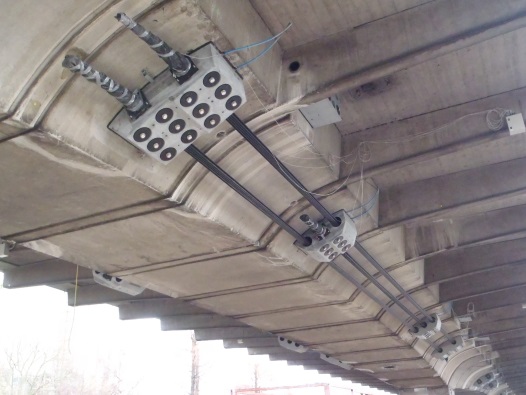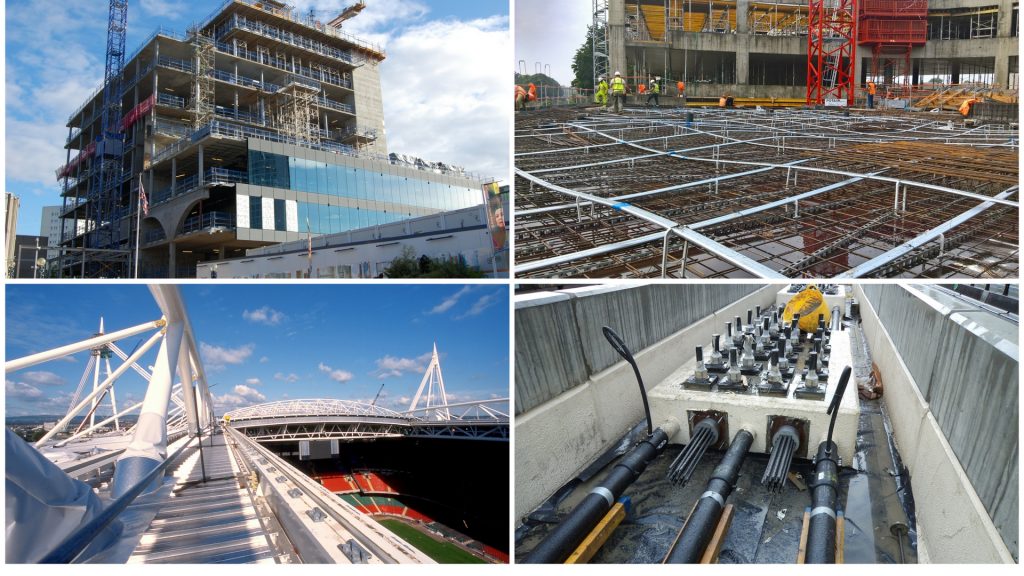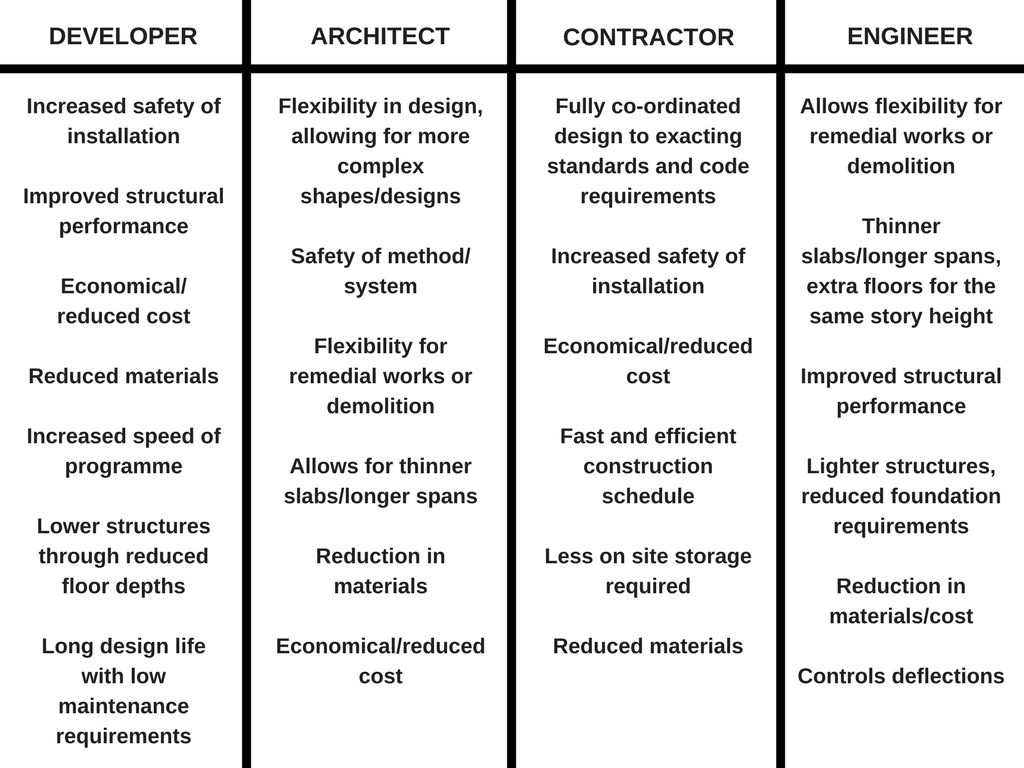The engineering-best friend of developers, architects, engineers and contractors – post-tensioning enables the construction and refurbishment of concrete structures; improving structural performance while also reducing construction time, costs, materials and environmental impact.
But what is post-tensioning? Post-tensioning is a method of reinforcing concrete. High-strength steel tendons are positioned in ducts or sleeves before the concrete is placed. Once the concrete has gained strength, tension is then applied, pulling the tendons and anchoring them against the outer edges of the concrete, before service loads are applied.
 The PT technique is a form of pre-stressing, which differs slightly from post-tensioning as steel tendons are tensioned before the concrete is placed. The tendons are stretched between strong bulkheads which withstand external forces and the concrete is poured around them.
The PT technique is a form of pre-stressing, which differs slightly from post-tensioning as steel tendons are tensioned before the concrete is placed. The tendons are stretched between strong bulkheads which withstand external forces and the concrete is poured around them.
Freyssinet’s founder Eugene Freyssinet successfully developed pre-stressed concrete in the 1930s, after recognising that placing concrete under compression greatly increased its strength. He led the first application of post-tensioning on a marine terminal in France in 1933, and now, 84 years later, the Freyssinet group continues to be at the forefront of PT technology and innovation – making significant advances in its uses, performance and durability.
Post-tensioning is used extensively in bridges, floor slabs, silos and other forms of concrete construction.
Freyssinet has installed PT systems to a variety of structures, including:
- Bridges
- Buildings
- Tanks
- Stadiums
- Nuclear containment vessels
- Gravity bases for oil rigs and wind turbines
- Art structures
The use of post-tensioning in the repair of structures is an area which has seen significant increase, particularly in structures built in the 1960s.
Post-tensioned structures can have issues with corroded tendons due to a lack of grout in the ducts. During an investigation, cores are drilled into the structure to find the duct and then it is opened to reveal the condition of the tendon and the grout. Freyssinet provides a full structural assessment, calculation and consultation in order to determine the most effective and economical repair solution.
Freyssinet uses both mono-strand and multi-strand jacking systems to strengthen structures, and has provided innovative solutions for bridge deck strengthening, column reinforcement and floor slab load capacity on a number of complex projects.
Freyssinet utilised a multi-strand system in different configurations during phase 2 of the Hammersmith Flyover refurbishment and strengthening works in 2015, installing a new post-tensioning system that was significantly more robust than the original system.
The project was the UK’s first and most significant full post-tensioning replacement and Freyssinet developed a number of different innovative methods in order to facilitate the complex requirements of the project.


